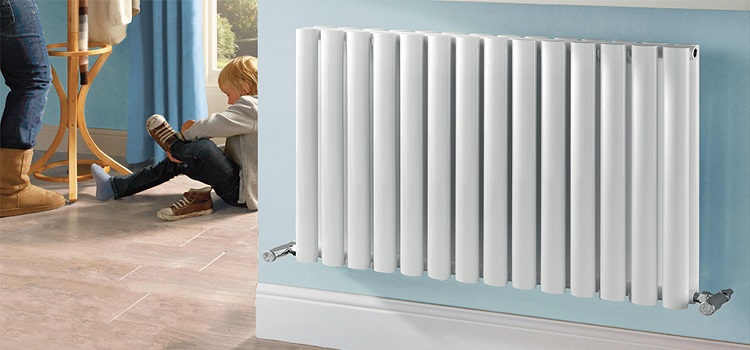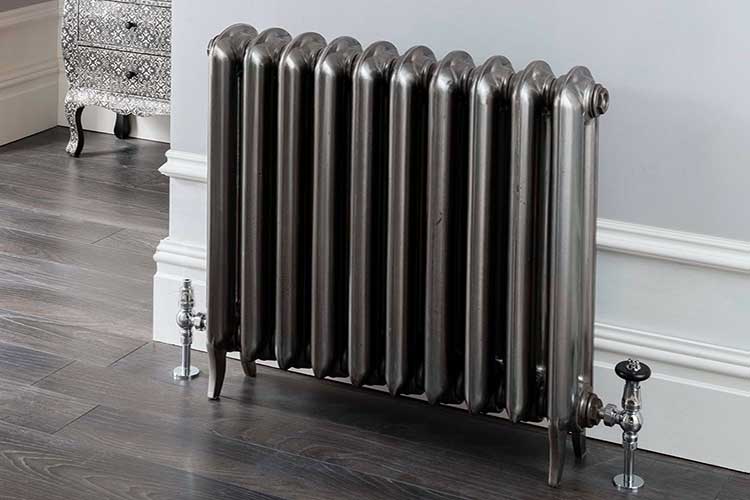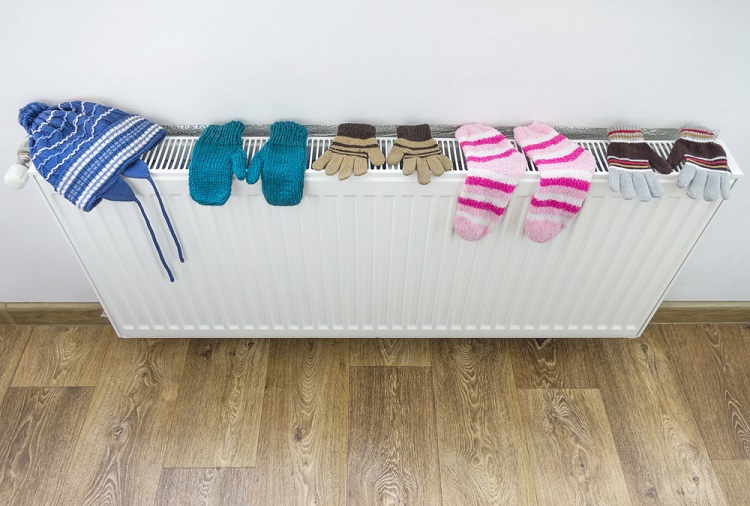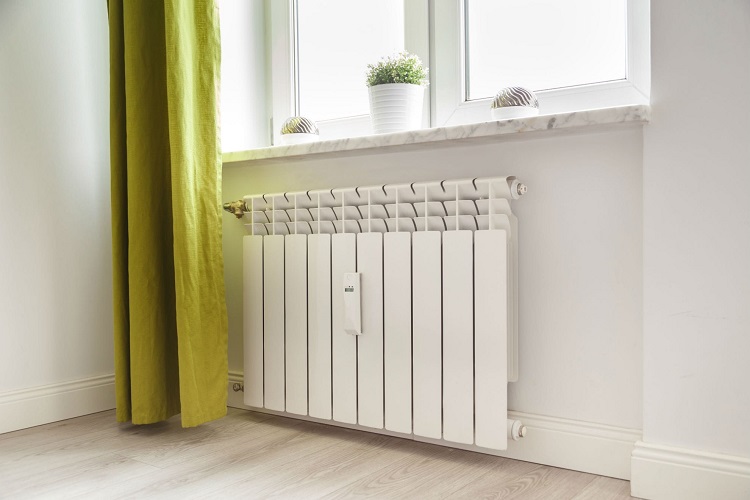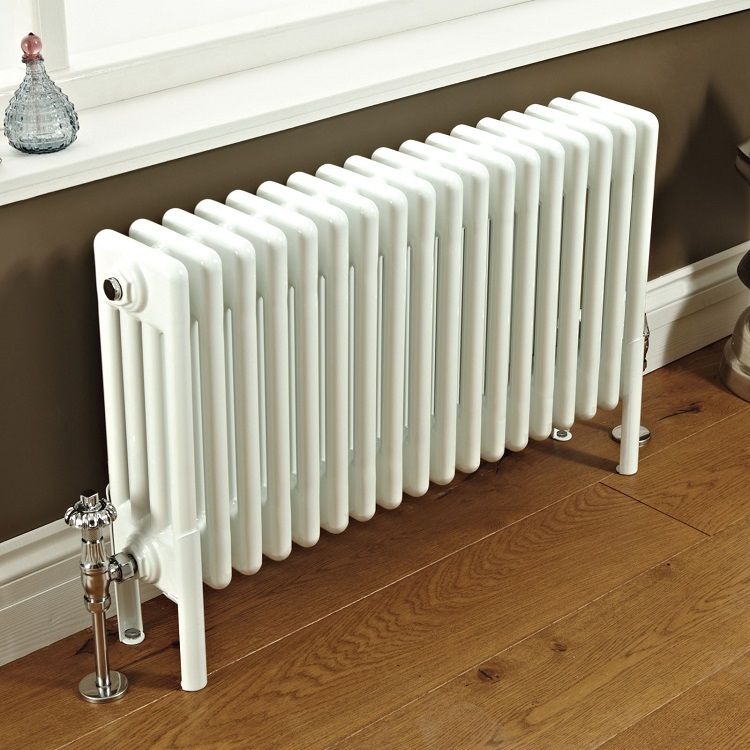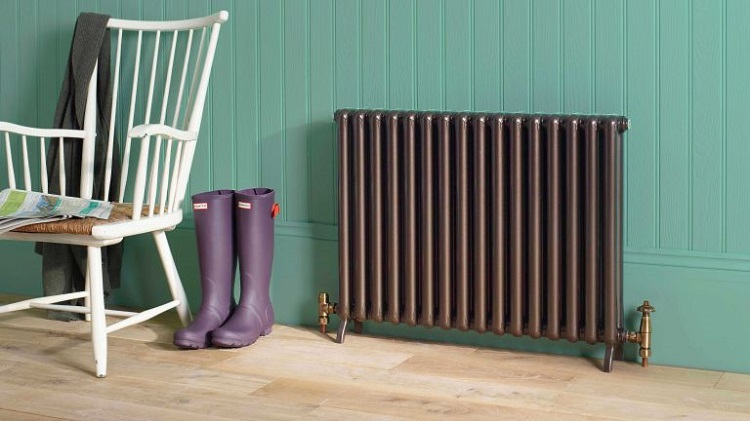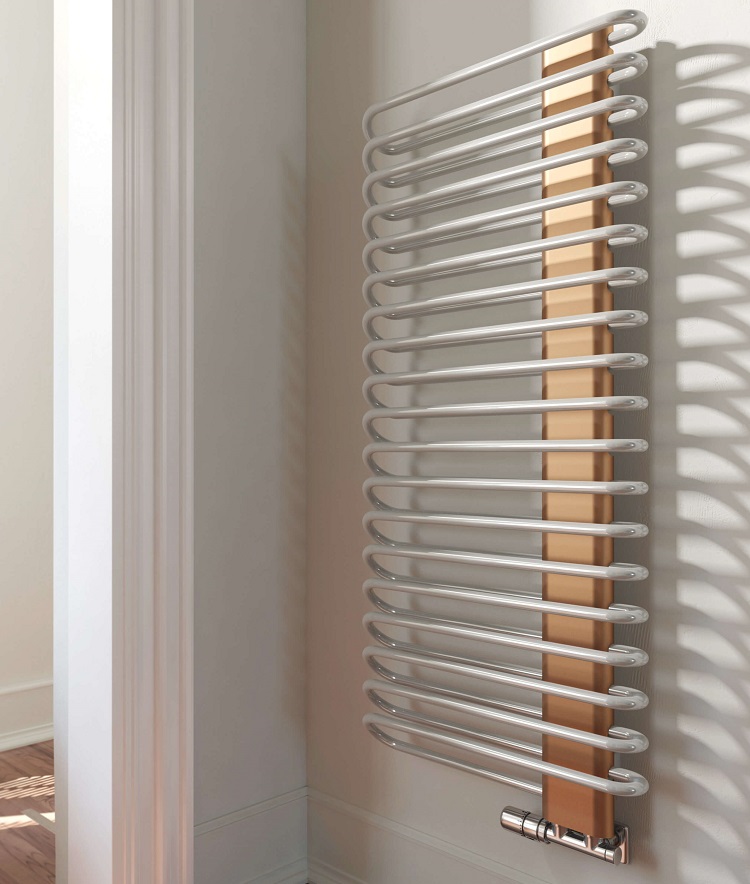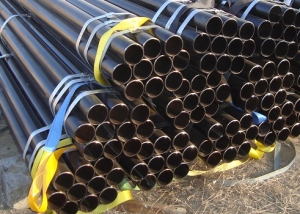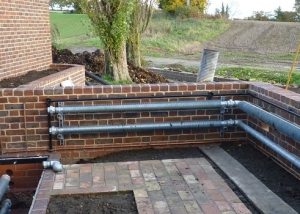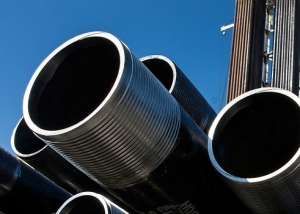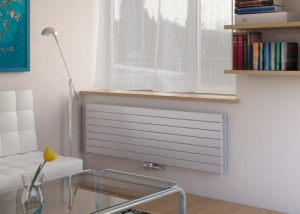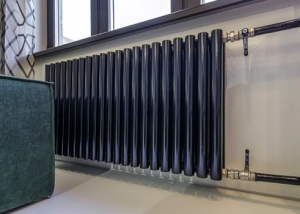The trend of abandoning stove heating in suburban households prompts the search for economical and practical ways to maintain comfort. Such a transition has its own nuances - a closed heating circuit differs from urban systems. Therefore, it is important to get acquainted with the capabilities and distinctive properties of radiators from different manufacturers in order to choose truly effective batteries for the home.
Content
Features of a closed heating circuit in a private house
Living in your own home has many advantages, including the possibility of insulation of housing with a reduction in utility bills. When deciding which heating radiators to choose, it is important to consider the installation and supply of heat.
The private sector involves connecting to a boiler, which is installed in the basement, boiler room or utility room. The most popular boilers:
- gas;
- solid fuel;
- combined.
Important! When connecting radiators, compatibility in various parameters is important. For example, copper contained in some types of boilers gradually destroys aluminum. The metal loses its excellent properties, becomes brittle, and radiators are gradually destroyed.
There are practically no obstacles for installing cast-iron heating radiators - they are adapted to untreated coolant. But their retro design is difficult to integrate into a modern interior. The heavy weight creates difficulties when mounting on the wall, although there are floor models.
The floor-mounted blocks are suitable for cottages, but this view is still little known. Built-in convectors are also suitable for summer cottages, they are preferred in the combined heating method. They have many advantages, but are almost not installed in city apartments (there is no suitable place).
The difference between heating in private homes from urban centralized systems
With which is better - aluminum heating radiators for an autonomous system, bimetallic or steel, it is worth deciding on the design stage. It is worthwhile to study in detail the parameters of the model - whether they are suitable for a single-pipe or two-pipe system.
Helpful advice! Often, similar models have differences in important operational parameters. It is recommended to compare power indicators with volumeheated air for your room.
Autonomous heating is calculated individually, mounted in accordance with the needs of the owners of the house. It has several differences from centralized systems:
- lack of water hammer and risk of overload;
- moderate working pressure;
- a wider choice of coolant in a closed circuit (antifreeze, water, oil) and the possibility of replacing one type with another;
- the ability to adjust the temperature by setting the valve in the mode of maintaining heat;
- the ability to clean the coolant and purge clogged batteries at any time;
- an extensive range of models adapted to the private sector;
- heating efficiency.
It happens that the power and size of the radiator you like for a country house are incorrectly calculated. Some varieties can be expanded if there is a place in the window sill (another installation location).
Important! Manufacturers often update the lineup, and suitable sections for building may not be at branded points of sale.
It is impossible to build up a steel tube, but it is easy to add a few cast-iron sections. This is often used to increase efficiency when upgrading an old brick or wooden house.
What types of radiators are suitable for a private house, their pros and cons
It is impossible to talk about which radiators are better without knowing the main varieties of thermal equipment. In most cases, they look at efficiency and the best ratio for price and quality.
Structurally subdivide:
- tubular;
- panel (whole);
- sectional (stackable),
- lamellar.
Helpful advice! According to the catalogs, you can choose designer batteries for the home - models made in the original concept. They are easiest to integrate into an exclusive interior.
“Warm paintings” or blocks with a decorative shield are often offered, but their thermal return is small. For a closed heating circuit, radiators from different alloys are suitable. The most sought after:
- aluminum (lightweight, inexpensive);
- bimetallic (steel + aluminum and copper + silumin, they are practical);
- steel (galvanized);
- cast iron (familiar to all classics).
Often there is debate about which steel radiators are better - sectional or tubular. If we talk about the practical side, then in homes where there are many children, often have to dry clothes on batteries. Of course, tubular radiators and heated towel rails remain indispensable when a large wash is started in the winter.
Sectional models are the most popular, as evidenced by sales volumes. It is convenient to join identical fragments by adding a few additional sections if it is cold in the house even after replacing the heating.
A special variety is vacuum batteries, such “guests from the future” are the lightest and most practical for children's rooms. Their surface does not warm above 37 ° C, so they do not seem hot when touched. A feature of the boron-lithium variety of the filler is that the volatile substance maintains a stable level of heat in the vacuum container. They are lightweight, easy to install and operate, do not burden the walls on which they are placed.
The panel models have a simple design - the tube with the coolant is closed by one or two aesthetic panels opened with heat-resistant paint. In more expensive models, the middle block consists of many plates for high thermal efficiency.
Note! Panel blocks are inexpensive and compact, so it is advisable to use them in houses where there are low window sills or there is little space in the window sill for volume models. They are not suitable for high-rise buildings - due to poor adaptation to pressure surges.
Another of the most useful developments is convection radiators, which have a special shape of plates that enhance the circulation of heated air. The coolant circulates through the steel heat exchanger in a multi-level casing of thin plates that give maximum calories to the room. It doesn’t matter, steel or bimetallic, the benefits from them are much greater than from the usual cast-iron "accordions".
Aluminum radiators for individual heating
When choosing heating equipment, most often pay attention to modern design and price tags. The best ones are aluminum heating radiators, they have high thermal efficiency and the optimal price-quality ratio.Aluminum, or rather silumin models, occupy the 2nd position in terms of sales for individual heating.
The most important advantages:
- high heat dissipation;
- minimal thermal inertness (comfortable surface literally an hour and a half after starting the coolant);
- compact sizes and small specific gravity;
- modern design;
- do not require frequent cleaning, thanks to a smooth inner surface;
- fully equipped for self-installation;
- the ability to change color;
- low price.
Like any product, there are minor flaws:
- aluminum is not compatible with copper, which is often found in heating boilers;
- they are produced in a small assortment by size, yielding to bimetal offers;
- more expensive than steel batteries of the same format, but their efficiency is slightly lower;
- a large number of sections provides comfortable temperature (they often have to be increased).
These shortcomings of aluminum heating radiators are insignificant, they do not attach importance when buying for the modernization of the heating circuit. However, the compatibility of silumin and copper is still worth paying attention to, otherwise they may soon leak.
Important! The cost of batteries directly depends on the brand reputation. The most expensive equipment is Italian, the most affordable batteries are domestic and Chinese, but it is difficult to vouch for their quality. The middle price segment - supplies from Turkey and the Czech Republic.
In addition, the aluminum housing is sensitive to the cleanliness of the coolant. A sharp shift in the acid-base reaction of heated water can provoke a chemical reaction with the release of air. A prerequisite - you have to install Mayevsky taps for bleeding gas plugs. In a closed circuit, it is advisable to run purified water, without abrasive particles and rust, they are destructive for smooth internal walls.
Cast Iron Models
Older people are sure that the best are cast iron batteries, which for almost a century have been an uncontested option. A kind of "classic" long and faithfully serves. With a properly installed heating system, they will last up to 50 years, but from time to time they have to be purged. On the rough inner walls of the accordion, a calcium precipitate and rust from the pipes settle.
Helpful advice! To reduce the likelihood of precipitation in a closed loop, it is recommended to use special reagents.
You can also replace the water in the batteries with antifreeze. This is a hot topic for those who visit the country house only on weekends in the winter. Cast iron radiators in a system with such a filler will not freeze. On the other hand, cast iron is chemically neutral, not afraid of a coolant with abrasive particles, therefore it is considered the most reliable option for private homes.
The disadvantages include:
- warm up for a long time at startup;
- large specific gravity of cast iron (bulky large-format batteries are difficult to mount on walls made of fragile materials);
- a rough surface over time accumulates calcium scale and organic sediment on turning areas and narrow passages, making it difficult to warm up the system (dismantling and purging are needed);
- bulky appearance and retro design are not always able to organically fit into a modern interior.
The availability, high thermal efficiency and durability of the best bimetal heating radiators outweigh all the advantages of competing models, they have many adherents.
The catalogs pay attention to the "old" design models with legs under the classic interior. They are more expensive than usual, they differ in complex soldering and bronze painting.
Steel batteries for a private home
Stainless steel is the most affordable metal for the manufacture of heating. Often these blocks are mentioned among the best heating radiators for private homes.
Panel and tubular modifications are a budget segment, but they have a lot of advantages:
- high efficiency due to thin walls;
- warm up quickly;
- wide range and mass of varieties;
- light weight and ease of installation;
- long period of operation;
- affordable price tags.
The disadvantages include:
- gradual destruction by corrosion, although steel is considered “stainless” (the process intensifies after draining the coolant with the presence of air);
- rustic design panel models;
- the need to clean the batteries from internal pollution.
Despite the disadvantages mentioned, good steel radiators in a private house will last for many years, especially if they use oil or antifreeze. Smooth models are easy to wash - and they are more in demand.
Copper Bimetal
In terms of technical parameters, copper and copper-aluminum are the most reliable models, but the price discourages buyers. Although copper and aluminum are antagonists, in this case everything is taken into account in the design. A copper tube is an excellent heat distributor in a silumin casing (aluminum-based alloy).
Note! In the catalogs there are also fully copper devices. But due to the high cost, complicated installation with soldering and a new design, they are assigned to the elite category.
Copper-aluminum blocks are the best option for the private sector. They are adapted to boilers where there are copper parts. There is no reason to refuse long-lasting and aesthetic batteries, they will last for more than a dozen years.
Benefits:
- high efficiency even at the "supporting" temperature of the heat carrier;
- no need for cleaning;
- warm up quickly and give calories to room air perfectly;
- low specific gravity;
- high quality radiators.
But the price is able to push away the buyer, who saves on everything.
Bimetal steel and aluminum radiators
The most popular models are bimetallic. Steel distribution tubes with galvanized inner surface are enclosed in a silumin casing with protective paint. They feature superior performance. Models are estimated to be much more expensive than steel and aluminum competitors.
Note! The developers combined the advantages of steel and aluminum, enhancing the heat transfer by the design features of the casing.
Experts say the future lies with them. If there is a desire to purchase such an option for a country house, it is important to study the technical description. The documents should indicate connection recommendations.
Bimetallic radiators tolerate temperature increases up to 100 ° C and pressure up to 25 Atm. Most models have a complete set of adapters, valves and temperature controllers for efficient operation.
It is recommended to weigh all the advantages of different models in order to decide whether it is worth overpaying for unclaimed indicators.
Rating of the best manufacturers
Comparative characteristics of heating appliances can be found on the rating table of the best models (price-quality), recognized by experts for 2019.
| Manufacturer | Model Dimensions | Material | Price per section |
| SIRA (Italy) | RS 500 (80 × 572 × 95) | bimetal | from 950 rub. |
| RIFAR (Russia) | Monolit 500 (80 × 577 × 100) | bimetal | from 850 rub. |
| Global (Italy) | ISEO 500 (80 × 582 × 80) | silumin (alum.) | from 790 rub. |
| Oasis (RF) | Al 500/80 (79 × 531 × 72) | silumin (alum.) | from 450 rub. |
| Buderus (Germany) | Logatrend (1200 × 300 × 155) | steel | from 2000 rub./unit |
| KZTO (Russia) | Harmony 2 (70 × 545 × 80) | steel | from 2250 rub. |
| MZOO (Belarus) | MS-140M-05 (104 × 588 × 140) | cast iron | from 500 rub. |
| Viadrus (Czech Republic) | Styl (60 × 580 × 130) | cast iron | from 1500 rub. |
Modern models meet all operational standards. Manufacturers compete, trying to provide the best quality and excellent design at an affordable price. It remains to focus on your own taste and prosperity. The level of "luxury" offers Arbonia (Switzerland, Germany) and GuRaTec (Germany).Excellent offers are also available from Terma (Poland), EXEMET (Russia) and Kermi (Germany).
